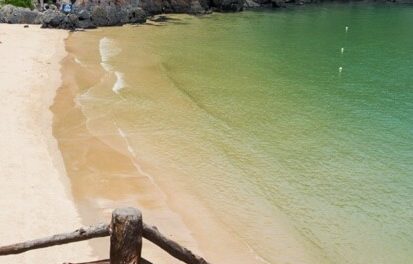1. What is karst?
The carbon dioxide (CO2) in the atmosphere dissolves in water then meets the positive hydrogen ion (H+) to form carbonic acid. Acid contacts the limestone and dissolves some substances in stone, causing the corrosion phenomenon. Natural products of karst process are caves with stalactites, stalagmites and underground rivers.
2. Halong Bay – a perfect karst process over 500 million years of evolution
From 570 to 500 million years ago, Halong Bay is a huge area of land and limestone. Pass by such that long period, Halong Bay has witnessed different ancient geographical conditions before becoming the bay as today. Take a look at this detail table to see which amazing phases that Halong Bay has experienced.
| Date | Geologic period | Events |
| 570M – 500M BC | beginning of the Cambrian Period | The area, which now forms Halong Bay, was basically mainland, submitted to a process of rain erosion. |
| end of the Cambrian Period | The area was flooded, commencing the existence of Halong Bay. | |
| 500M – 400M BC | Ordovician and Silurian periods | The area of north-east Vietnam was almost like a deep sea, submitted to the constant activity of tectonic plates. |
| end of the Silurian Period | It underwent a phase of inverse-motion that created mountains deep under the water. | |
| 420M – 340M BC | end of the Silurian Period and throughout the whole Devonian Period | The area was subjected to powerful forces of erosion from the hot and dry climate. At this point, Halong was part of a wide mainland that comprised most of today’s South China Sea and Chinese continental shelf. |
| end of Devonian Period | Due to tectonic activity, the Halong area and the entire north-east region were raised from the depths | |
| 340M – 240M BC | later Carboniferous and Permian periods | The formation of the limestone layer more than 1,000 m thick. A shallow and warm sea reformed, which existed for approximately 100 million years. It created two kinds of limestone: the Cat Ba layer of the early Carboniferous period (450 m thick); and the Quang Hanh layer of the middle Carboniferous and the early Permian period (750 m thick). These two layers constitute the majority of the islands of the Bay. |
| 67M BC | end of the Cretaceous Period | Halong Bay existed in the environment of a high mountainous mainland due to the influence of strong mountain-forming phases. |
| middle of the Paleogene Period | These motions remain continuous and stable, while strong processes of erosion began, and after millions of years, a form of semi-highland topography took shape. The continuation of this erosion has progressively cut the highlands into blocks with altitudes similar to today’s mountains. | |
| 26M – 10M BC | Neogene Period | The development of the Halong depression. |
| 2M – 9,000 BC | Pleistocene epoch of the Quaternary period | The process of erosion began dissolving the limestone-rich region of Halong, after that, forming the limestone plain was most active |
| 68,000 – 9,000 BC | middle and late Pleistocene Epoch | Period when the caves and grottoes of the area formed. |
| early Holocene Epoch | The islands of today’s Halong Bay are basically remnants of these mountains, flooded. Rainwater flowed into crevices in the limestone that had formed from tectonic activity. This steady erosion constantly widened the cracks, eventually creating today’s formations. | |
| 9,000 – 5,000 BC | Holocene Epoch | This period is notable for the advance of the sea. |
| 5,000 – 2,000 BC | The movement of the sea reached its peak and forming today’s Halong Bay. | |
| 2,000 – 1,000 BC | With the sea in a steady process of recession, Halong culture began to develop. | |
| beginning of the late Holocene Epoch | The level of the water once again increased, forming a marshy floor of canals and streams, and creating the water marks that can be seen on the stone cliffs of today. |
Table Source: Wikipedia
Nowadays, the karst process keep occurring, the corroded bottom of every islets on the bay is a proof for that.




